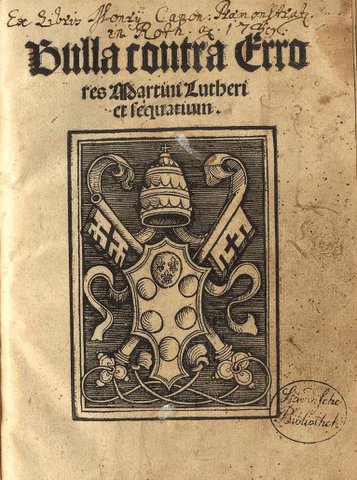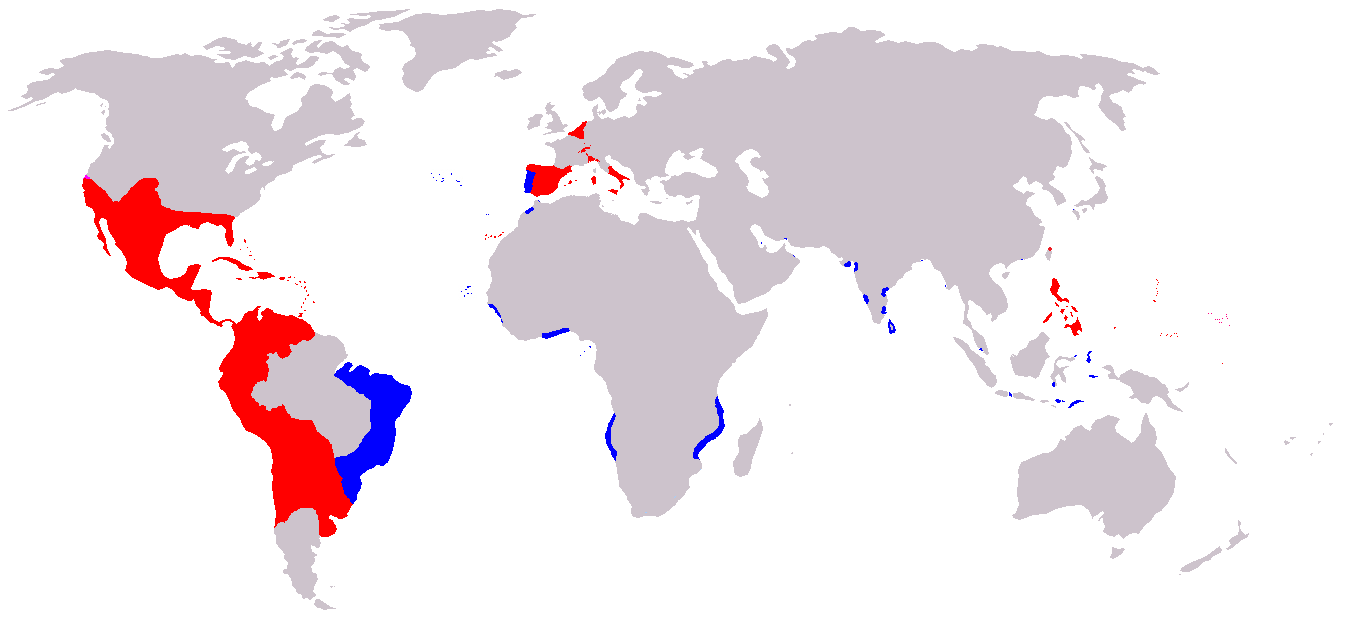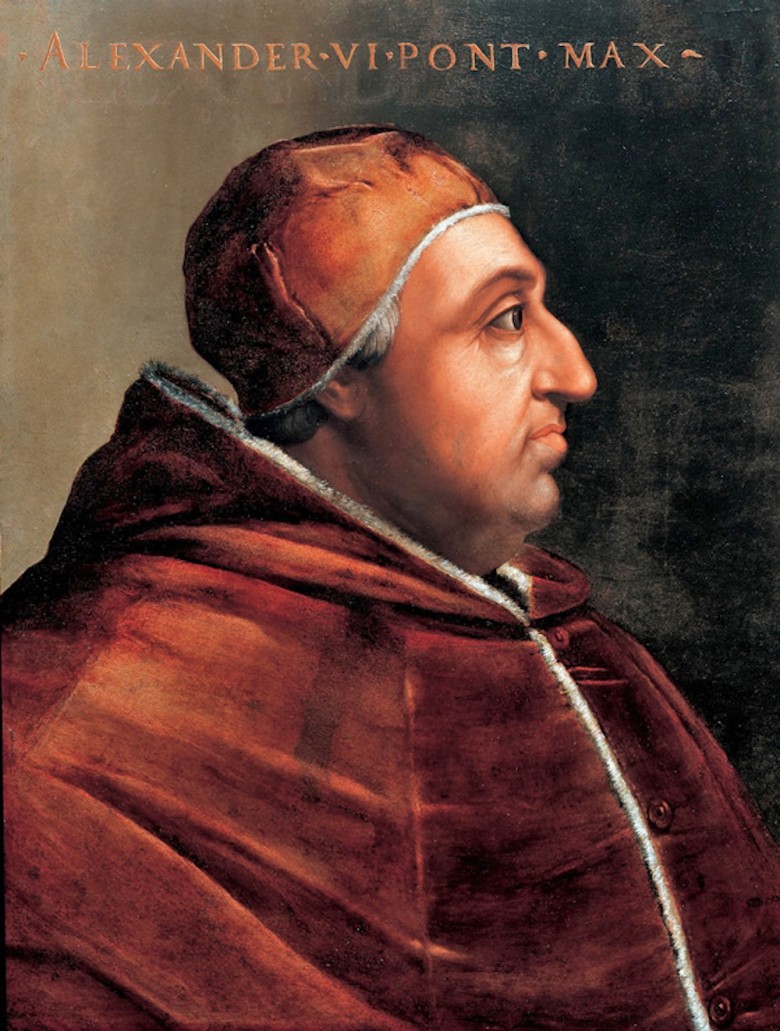|
Eximiae Devotionis
''Eximiae devotionis'' declared on 3 May 1493 is one of three papal bulls of Pope Alexander VI delivered purporting to grant any and all overseas territories in the west and ocean to kings of Castile and León that were found by the kings of Castile and León provided those territories were not already in the possession of another Christian lord. The document in addition to ''Inter caetera'' delivered on 4 May 1493 and ''Dudum siquidem'' delivered on 26 September 1493 make up what is known as the ''Bulls of Donation''. ''Eximiae devotionis'' recognized the claims of the kings of Castile and León and their successors to any discovered lands not already held by a Christian prince, similar to previous recognition granted to the Kings of Portugal regarding trading rights in the regions of Africa and Guinea.Pope Alexander VI, ''Eximiae Devotionis'', 1493 References 15th century in Africa 1493 documents 15th-century papal bulls Documents of Pope Alexander VI {{RC-document-stu ... [...More Info...] [...Related Items...] OR: [Wikipedia] [Google] [Baidu] |
Papal Bull
A papal bull is a type of public decree, letters patent, or charter issued by the pope of the Catholic Church. It is named after the leaden Seal (emblem), seal (''bulla (seal), bulla'') traditionally appended to authenticate it. History Papal bulls have been in use at least since the 6th century, but the phrase was not used until around the end of the 13th century, and then only internally for unofficial administrative purposes. However, it had become official by the 15th century, when one of the offices of the Apostolic Chancery was named the "register of bulls" ("''registrum bullarum''"). By the accession of Pope Leo IX in 1048, a clear distinction developed between two classes of bulls of greater and less solemnity. The majority of the "great bulls" now in existence are in the nature of confirmations of property or charters of protection accorded to monasteries and religious institutions. In an era when there was much fabrication of such documents, those who procured bulls ... [...More Info...] [...Related Items...] OR: [Wikipedia] [Google] [Baidu] |
Pope Alexander VI
Pope Alexander VI (, , ; born Roderic Llançol i de Borja; epithet: ''Valentinus'' ("The Valencian"); – 18 August 1503) was head of the Catholic Church and ruler of the Papal States from 11 August 1492 until his death in 1503. Born into the prominent Borja family in Xàtiva in the Kingdom of Valencia under the Crown of Aragon, he was known as Roderic de Borja, and he is commonly referred to by the Italianized form as Rodrigo Borgia. He studied law at the University of Bologna. He was ordained deacon and made a cardinal in 1456 after the election of his uncle as Pope Callixtus III, and a year later he became vice-chancellor of the Catholic Church. He proceeded to serve in the Roman Curia under the next four popes, acquiring significant influence and wealth in the process. In 1492, Rodrigo was elected pope, taking the name Alexander VI. Alexander's papal bulls of 1493 confirmed or reconfirmed the rights of the Spanish crown in the New World following the finds of Christop ... [...More Info...] [...Related Items...] OR: [Wikipedia] [Google] [Baidu] |
Castile And León
Castile and León is an Autonomous communities of Spain, autonomous community in northwestern Spain. Castile and León is the largest autonomous community in Spain by area, covering 94,222 km2. It is, however, sparsely populated, with a population density below 30/km2. While Capital of Castile and León, a capital has not been explicitly declared, the seats of the executive and legislative powers are set in Valladolid by law, and for all purposes that city (also the most populated municipality) serves as the ''de facto'' regional capital. Castile and León is a landlocked region, bordered by Portugal as well as by the Spanish autonomous communities of Galicia (Spain), Galicia, Asturias, Cantabria, the Basque Autonomous Community, Basque Country, La Rioja (Spain), La Rioja, Aragon, Castilla–La Mancha, the Community of Madrid and Extremadura. Chiefly comprising the northern half of the Meseta Central, Inner Plateau, it is surrounded by mountain barriers (the Cantabrian Mount ... [...More Info...] [...Related Items...] OR: [Wikipedia] [Google] [Baidu] |
Inter Caetera
''Inter caetera'' ('Among other [works]') was a papal bull issued by Pope Alexander VI on the 4 May 1493, which granted to the Catholic Monarchs Ferdinand II of Aragon, King Ferdinand II of Aragon and Isabella I of Castile, Queen Isabella I of Castile all lands to the "west and south" of a pole-to-pole line 100 League (unit), leagues west and south of any of the islands of the Azores or the Cape Verde islands. It remains unclear whether the pope intended a "donation" of sovereignty or an Feudalism, infeudation or investiture. Differing interpretations have been argued since the bull was issued, with some arguing that it was only meant to transform the possession and occupation of land into lawful sovereignty. Others, including the Spanish crown and the conquistadors, interpreted it in the widest possible sense, deducing that it gave Spanish Empire, Spain full political sovereignty.. OnlineGoogle Books entry/ref> ''Inter caetera'' and its supplement ''Dudum siquidem'' (September ... [...More Info...] [...Related Items...] OR: [Wikipedia] [Google] [Baidu] |
Dudum Siquidem
''Dudum siquidem'' (Latin for "A short while ago") was a papal bull issued by Pope Alexander VI on , one of the Bulls of Donation addressed to the Catholic Monarchs Isabella I of Castile and Ferdinand II of Aragon which supplemented the bull '' Inter caetera'' and purported to grant to them "all islands and mainlands whatsoever, found and to be found, discovered and to be discovered, that are or may be or may seem to be in the route of navigation or travel towards the west or south, whether they be in western parts, or in the regions of the south and east and of India". Background The bull ''Aeterni regis'' of 1481, delivered by Pope Sixtus IV, had confirmed the substance of the Treaty of Alcáçovas, which itself had confirmed Castile in its possession of the Canary Islands and had granted to Portugal all further new lands to be won by Christendom in Africa and the East Indies. At the beginning of the year 1492 the Christian reconquest of Spain was completed by the ca ... [...More Info...] [...Related Items...] OR: [Wikipedia] [Google] [Baidu] |
Bulls Of Donation
The Bulls of Donation, also called the Alexandrine Bulls, and the Papal donations of 1493, are three papal bulls of Pope Alexander VI delivered in 1493 which granted overseas territories to Portugal and the Catholic Monarchs of Spain. A fourth bull followed later the same year, and all four bulls were replaced by the Treaty of Tordesillas of 1494. Description The Pope issued edicts dated . The third superseded the first two. A final edict, '' Dudum siquidem'' of , supplemented the ''Inter caetera''.. OnlineGoogle Books entry/ref> * The first bull, ''Inter caetera'', dated 3 May, recognized Spain's claim to any discovered lands not already held by a Christian prince, and protected Portugal's previous rights. Both parties found this too vague. * The second bull, ''Eximiae devotionis'', also dated 3 May, granted to the kings of Castile and León and their successors the same privileges in the newly discovered land that had been granted to the kings of Portugal in the regions of A ... [...More Info...] [...Related Items...] OR: [Wikipedia] [Google] [Baidu] |
Kings Of Portugal
This is a list of Portuguese monarchs who ruled from the establishment of the Kingdom of Portugal, in 1139, to the deposition of the Portuguese monarchy and creation of the Portugal, Portuguese Republic with the 5 October 1910 revolution. Through the nearly 800 years in which Portugal was a monarchy, the kings held various other Style of the Portuguese sovereign, titles and pretensions. Two kings of Portugal, Ferdinand I of Portugal, Ferdinand I and Afonso V of Portugal, Afonso V, claimed the crown of Castile and waged wars in order to enforce their respective claims. Ferdinand I managed to be recognized as Kingdom of Galicia, King of Galiza in 1369, although his dominance of the region was short-lived. When the House of Habsburg came into power, the kings of Spain, kings of Naples, Naples, and kings of Sicily, Sicily also became kings of Portugal. The House of Braganza brought numerous titles to the Portuguese Crown some honorary, such as the attribution of the title of ''Rex F ... [...More Info...] [...Related Items...] OR: [Wikipedia] [Google] [Baidu] |
Africa
Africa is the world's second-largest and second-most populous continent after Asia. At about 30.3 million km2 (11.7 million square miles) including adjacent islands, it covers 20% of Earth's land area and 6% of its total surface area.Sayre, April Pulley (1999), ''Africa'', Twenty-First Century Books. . With nearly billion people as of , it accounts for about of the world's human population. Demographics of Africa, Africa's population is the youngest among all the continents; the median age in 2012 was 19.7, when the worldwide median age was 30.4. Based on 2024 projections, Africa's population will exceed 3.8 billion people by 2100. Africa is the least wealthy inhabited continent per capita and second-least wealthy by total wealth, ahead of Oceania. Scholars have attributed this to different factors including Geography of Africa, geography, Climate of Africa, climate, corruption, Scramble for Africa, colonialism, the Cold War, and neocolonialism. Despite this lo ... [...More Info...] [...Related Items...] OR: [Wikipedia] [Google] [Baidu] |
Guinea
Guinea, officially the Republic of Guinea, is a coastal country in West Africa. It borders the Atlantic Ocean to the west, Guinea-Bissau to the northwest, Senegal to the north, Mali to the northeast, Côte d'Ivoire to the southeast, and Sierra Leone and Liberia to the south. It is sometimes referred to as Guinea-Conakry, after its capital Conakry, to distinguish it from other territories in the Guinea (region), eponymous region, such as Guinea-Bissau and Equatorial Guinea. Guinea has a population of 14 million and an area of . Formerly French Guinea, it achieved independence in 1958. Guinea has a history of military coup d'état, coups d'état.Nicholas Bariyo & Benoit FauconMilitary Faction Stages Coup in Mineral-Rich Guinea ''Wall Street Journal'' (5 September 2021).Krista LarsonEXPLAINER: Why is history repeating itself in Guinea's coup? Associated Press (7 September 2021).Danielle PaquettHere's what we know about the unfolding coup in Guinea ''Washington Post'' (6 Septembe ... [...More Info...] [...Related Items...] OR: [Wikipedia] [Google] [Baidu] |
15th Century In Africa
In music, a fifteenth or double octave, abbreviated ''15ma'', is the interval between one musical note and another with one-quarter the wavelength or quadruple the frequency. It has also been referred to as the bisdiapason. The fourth harmonic, it is two octaves. It is referred to as a fifteenth because, in the diatonic scale, there are 15 notes between them if one counts both ends (as is customary). Two octaves (based on the Italian word for eighth) do not make a sixteenth, but a fifteenth. In other contexts, the term ''two octaves'' is likely to be used. For example, if one note has a frequency of 400 Hz, the note a fifteenth above it is at 1600 Hz (''15ma'' ), and the note a fifteenth below is at 100 Hz (''15mb'' ). The ratio of frequencies of two notes a fifteenth apart is therefore 4:1. As the fifteenth is a multiple of octaves, the human ear tends to hear both notes as being essentially "the same", as it does the octave. Like the octave, in ... [...More Info...] [...Related Items...] OR: [Wikipedia] [Google] [Baidu] |
1493 Documents
Year 1493 ( MCDXCIII) was a common year starting on Tuesday of the Julian calendar. Events January–December * January 19 – Treaty of Barcelona: Charles VIII of France returns Cerdagne and Roussillon to Ferdinand of Aragon. * March 1 – Martín Alonso Pinzón returns to the city of Bayona in Spain from the voyage of discovery, sending the first notice about the discovery to the Catholic Monarchs (Christopher Columbus is delayed by a storm in the Azores). * March 4 – Christopher Columbus anchors in Lisbon and completes his February 15 letter on the first voyage, conveying the news of his discoveries. * March 15 – Christopher Columbus and Martín Alonso Pinzón return to Palos de la Frontera, the original port in Spain from where they started the first voyage of discovery. * April 12 – Battle of Anfao: Askia Mohammad I defeats Sonni Baru, and usurps the throne of the Songhai Empire. * May 4 – In the papal bull ''Inter caetera'', ... [...More Info...] [...Related Items...] OR: [Wikipedia] [Google] [Baidu] |
15th-century Papal Bulls
The 15th century was the century which spans the Julian calendar dates from 1 January 1401 (represented by the Roman numerals MCDI) to 31 December 1500 (MD). In Europe, the 15th century includes parts of the Late Middle Ages, the Early Renaissance, and the early modern period. Many technological, social and cultural developments of the 15th century can in retrospect be seen as heralding the " European miracle" of the following centuries. The architectural perspective, and the modern fields which are known today as banking and accounting were founded in Italy. The Hundred Years' War ended with a decisive French victory over the English in the Battle of Castillon. Financial troubles in England following the conflict resulted in the Wars of the Roses, a series of dynastic wars for the throne of England. The conflicts ended with the defeat of Richard III by Henry VII at the Battle of Bosworth Field, establishing the Tudor dynasty in the later part of the century. Constant ... [...More Info...] [...Related Items...] OR: [Wikipedia] [Google] [Baidu] |







